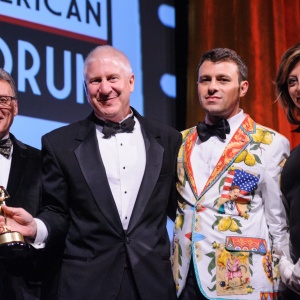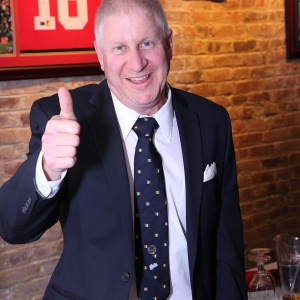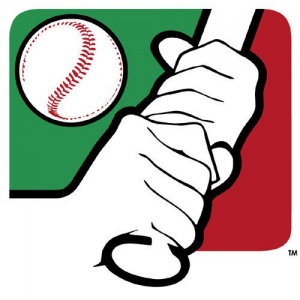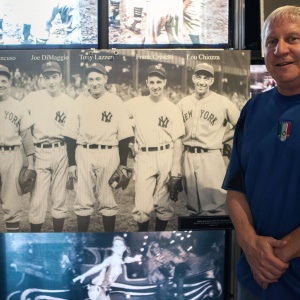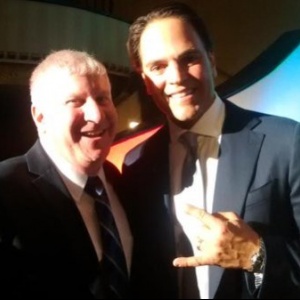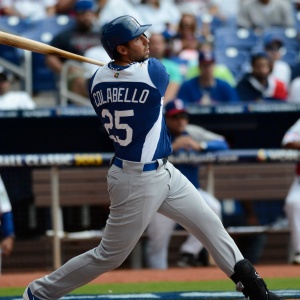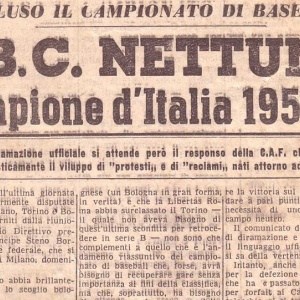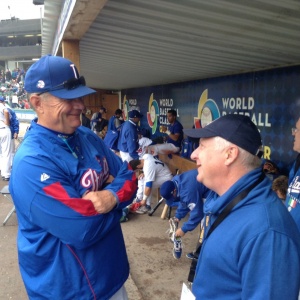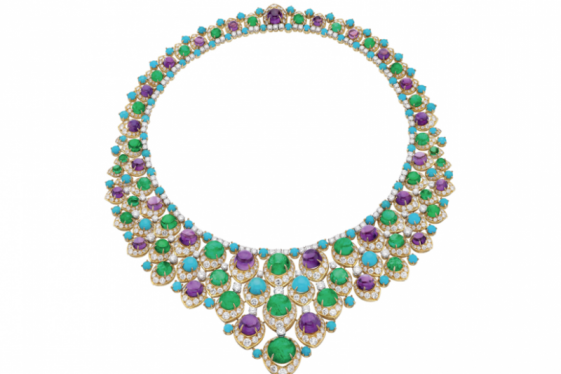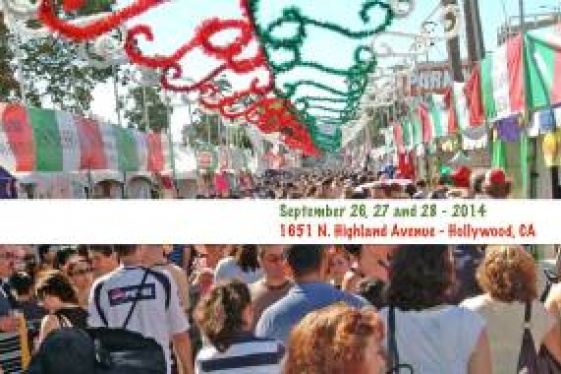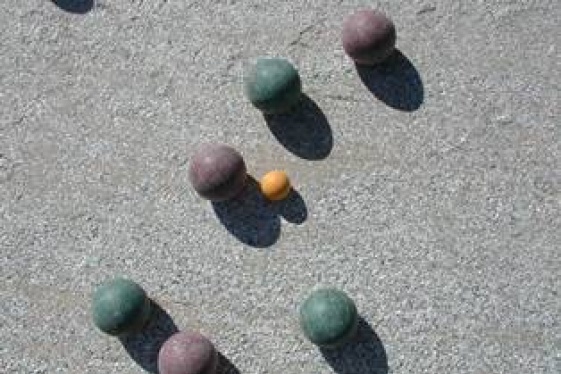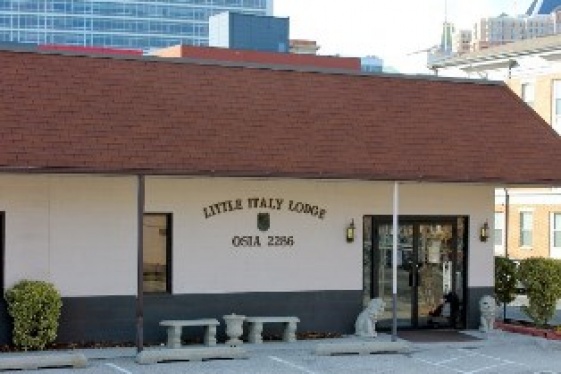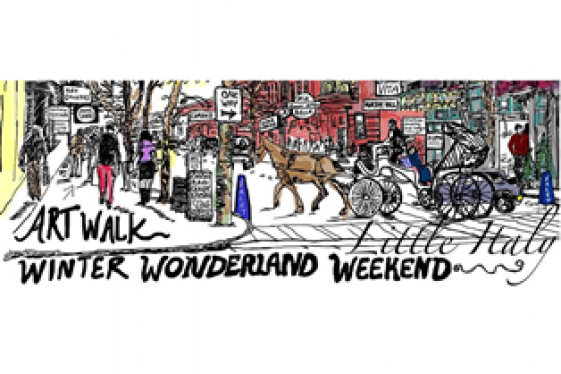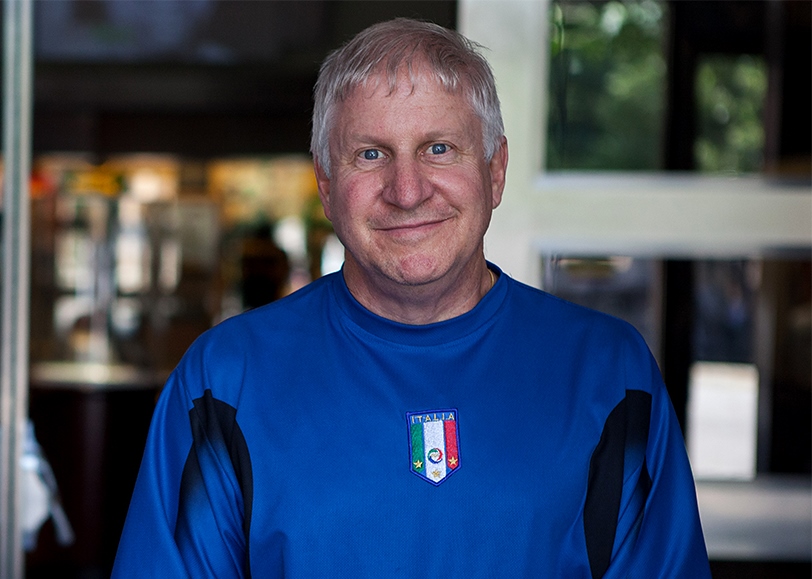
Roberto Angotti (Author and Director of "Italian American Baseball Family")
Italian American Baseball Family: non solo Joe DiMaggio

The story of the Italians in the US, and in particular the story of their contribution to the greatness of America, can be told by several different angles, as we know very well here at We the Italians.
One of these points of view is sport: and when we talk about sport in the US, Baseball is probably the first choice. That is why we are very pleased to welcome Roberto Angotti, a talented writer and filmmaker whose documentary "Italian American Baseball Family" very well describes this topic.
Roberto, your hour-long documentary "Italian American Baseball Family" recently won the Russo Brothers Italian American Film Forum Award at the National Italian American Foundation 42nd Anniversary Gala in Washington, DC. First of all, please tell us something about this contest
The National Italian American Foundation (NIAF), the Italian Sons and Daughters of America, and the Russo Brothers offered the Italian American Film Forum Grant to aspiring filmmakers. Spearheaded by directors Anthony and Joe Russo, the Film Forum is an initiative to fund films depicting and exploring the Italian American experience for the benefit of future generations.
I applied for the grant and was chosen as one of seven recipients awarded $7,500 to make a film in 2017. I finished my documentary in 90 days, which is hard to believe, but the hard work paid off because I was selected as one of three finalists to screen my film, Italian American Baseball Family, at the NIAF 42nd Anniversary Gala Weekend in Washington, D.C. My documentary was chosen as the 2017 winner of the Russo Brothers Italian American Film Forum Award, which was a very exciting and rewarding moment.
Mentor and renowned historian, Lawrence Baldassaro, author of two of the best reads about baseball: "Beyond DiMaggio: Italian Americans in Baseball" and "Baseball Italian Style: Great Stories Told by Italian American Major Leaguers from Crosetti to Piazza", accompanied me at the NIAF 42nd Anniversary Gala Weekend along with my son and sound man Dante Angotti, as well as Director of Photography Peter McEvilley. Professor Baldassaro was kind enough to be interviewed for the documentary at the National Italian American Sports Hall of Fame in Chicago, and his historical insights and commentary provided the foundation for my film.
Another highlight of the production was meeting and interviewing National Baseball Hall of Fame legend, Tommy Lasorda, who is an Italian American baseball icon. The film also features conversations with MLB past and present players Frank Viola, Nick Punto, Francisco Cervelli, Brandon Nimmo, Chris Colabello, and Gavin Cecchini.
How did you come up with the idea of a documentary about this topic? And how did you actually realize it?
I grew up in Los Angeles in the 1980s, admiring the Los Angeles Dodgers as they won a pair of World Series with Tommy Lasorda as their manager. For a teenager who devoured all things baseball, and whose parents were born in Italy, it was the perfect fit. When the Los Angeles Dodgers drafted and developed Hall of Famer Mike Piazza, it reaffirmed my convictions about baseball aligning with Italian American players.
Over the last year I have been working for Federazione Italiana Baseball Softball (FIBS) as the English language editor and reporter (www.fibs.it/en) and represented the Italian national teams at three 2017 international competitions: the World Baseball Classic in Guadalajara, Jalisco, Mexico; the World Baseball Softball Confederation (WBSC) U-19 Junior Women’s World Championship (JWWC) in Clearwater, Florida; and the World Baseball Softball Confederation (WBSC) U-18 Baseball World Cup in Thunder Bay, Ontario, Canada.
When I returned from the 2017 World Baseball Classic, I resolved to make a film about Italian Americans and the integral part they play in baseball. Creating Italian American Baseball Family was a way for me to return to my filmmaking roots which I first developed in college. Writing about baseball over the years, my articles had become more focused on Italian American players affiliated with Major League Baseball (MLB) in addition to Italian-born-and-developed players.
I realized that I wanted to tell the story of Italian Americans’ role in baseball and in the culture of American sports. Italian American Baseball Family documents an ethnic group’s rise from adversity and celebrates its triumphs in breaking into a game that was originally dominated by English, Irish and German immigrants.
Let's go back in time. How did playing baseball help the Italians to integrate in the American society?
Professor Lawrence Baldassaro explained this process so well in his book, Beyond DiMaggio: Italian Americans in Baseball. While some immigrants chose to change their names to mask their Italian identity, most felt the need to preserve and hold on to familiar things such as language, customs, and beliefs as a way of tolerating the discriminatory practices and injustices they encountered in America.
Children of immigrants felt stuck in the middle between protective parents who did not want the foreign ways of America to affect the close-knit Italian family, and their own desire to blend into the culture in which they were born. These children lived dual identities, conflicted by the rich Italian traditions of their parents inside their homes and the outside world which existed in the streets and in the schools, where they were taught to become American.
The solution to the stigma of being labeled as outsiders was to discover a way to become less different by assimilating into American culture. As a staple of mainstream American life, baseball presented Italians a viable point of entry as players and fans. By instilling the values of fair play, opportunity and democracy, baseball taught the children of immigrants how to become American.
Which are the most important names we can mention, talking about the Italian American champions in this sport?
Many Italian Americans have participated in all aspects of baseball on the field, in coaching and team management, as broadcasters, and behind the scenes in administration as well. The Italian American Baseball Hall of Fame has recognized many of them including Tony Lazzeri, Joe DiMaggio, Roy Campanella, Yogi Berra, Ernie Lombardi, Phil Rizzuto, Tommy Lasorda, Ron Santo, Joe Torre, Tony La Russa, John Smoltz, Craig Biggio, and Mike Piazza. Many other Italian Americans have contributed to the sport as well.
I concur with Professor Baldassaro who explains that no one better epitomizes the culmination of the evolution of Italian American baseball or in American society than A. Bartlett Giamatti. He understood the nature and significance of the immigrant experience, and wrote about it as eloquently as he did about baseball. He was the grandson of an immigrant laborer who became the president of Yale, then president of the National League before ascending to the office of commissioner of Major League Baseball (MLB).
Can you share with us one interesting anecdote you discovered while researching for your documentary? A particular story mentioned in your documentary is about the Colabello family…
My documentary explores how Italian Americans have circled back to Italy to help grow the game abroad by playing for Team Italy in the Olympics and in the World Baseball Classic. Although brothers Vince, Joe, and Dom DiMaggio may be the premier Italian American Baseball Family, the Colabellos from Milford, Massachusetts are a perfect example of the modern day Italian American Baseball Family. As a father and son combination, both played professional baseball on the biggest international stages, which makes the Colabellos are a rare breed.
Father Lou Colabello was the starting pitcher for Team Italy against host Team USA at Dodger Stadium in Los Angeles during the 1984 Olympics while his son Chris Colabello later played baseball in Italy as a youth and, like his father, eventually went on to represent Team Italy in the 2013 and 2017 World Baseball Classics.
After pitching for the University of Massachusetts in a College World Series, Lou Colabello played baseball professionally in Rimini, Italy. His experience as an international baseball ambassador culminated when he pitched for the Italians in the 1984 Olympics. Chris Colabello played for Team Italy in both the 2013 and 2017 World Baseball Classics, bookending major league stints with the Minnesota Twins and Toronto Blue Jays.
Baseball had an important role in the relationship between Italy and the US after World War II…
After Japan bombed Pearl Harbor on December 7, 1941, the United States declared war and began targeting those of German, Italian, or Japanese descent. The Italians were the largest immigrant group in the U.S. at the time and about 600,000 of the country’s five million Italian immigrants, who had not yet naturalized, were forced to register as enemy aliens. Baseball came ashore to Italy in 1944 when allied soldiers stormed the beaches of Nettuno and nearby Anzio en route to freeing Rome from its Nazi occupiers. American troops brought baseball gear and taught Italians how to play.
Italians were considered immigrants to America, and baseball was one way these people could counter the negative immigrant identity as an outsider. The game bridged the gap so that Italians could integrate into the American way of life.
In 2011 you launched an MLB.com blog - which eventually became a Top 10 MLB.com Fan website – to showcase up-and-coming Italian and Italian American players. Tell us more about this.
MLBforLife.com prides itself on giving readers an exclusive behind-the-scenes look at international events such as the European Baseball Championships and the World Baseball Classics, and serves as a way to support and grow the game of baseball abroad. My blog’s motto is “where baseball meets history and pop culture” and I have written more than 150 articles about baseball and music since 2011.
I share the same first name of one of my favorite baseball players of all time, the legendary Roberto Clemente. Coincidentally Tommy Lasorda once played with Roberto Clemente for the Montreal Royals, the Dodgers Triple-A team. After Clemente’s tragic death in 1972, I felt compelled to promote athletes and musicians who gave back to their communities since that was something Clemente was known for in addition to being a Latino hero.
When I started www.mlbforlife.com, I wanted to focus on players who had tremendous talent yet were overlooked by the media. Then I gradually shifted my focus to up-and-coming Italian American players. MLBforlife.com became a Top 10 MLB.com Fan website, and continues to highlight and showcase talented musicians and baseball players.
In 2013, you curated the "Artists’ Tribute to Italian Americans in Baseball" exhibition at the Convivio Center in San Diego’s Little Italy…
Throughout my professional career as a writer and radio personality, I have bridged the gap between music, sports, and popular culture. As a proud Italian, I love baseball, history, and my Italian American heritage. After visiting the Federazione Italiana Baseball Softball Academy in Tirrenia, I was invited to the 2013 World Baseball Classic (WBC) in Phoenix, Arizona. At the WBC, I got to know Mike Piazza, who served as Team Italy’s hitting coach, and inspired me to document the Italian American baseball experience.
Growing up in Los Angeles as a first-generation Italian American Dodgers fan, I understood the strong connection between Tommy Lasorda and Mike Piazza. When Mike Piazza decided to play for Team Italy in the 2006 WBC, I enlisted to become a soldier in the trenches of the Italian baseball revolution. I became friends with Piazza when Team Italy was in Phoenix training in preparation for the 2013 World Baseball Classic.
When Hall of Famer Tommy Lasorda dropped in on Team Italy’s practice at Dodgers’ Spring Training Camp in Arizona to address the team, I pledged my support and worked tirelessly behind the scenes to provide daily journals of the team’s activities. Lasorda’s emotionally-driven speech, coupled with Piazza’s serious commitment to the development of Italian baseball, inspired me to share the experience with others through a traveling exhibit honoring Italian American baseball.
Entitled Artists’ Tribute to Italian Americans in Baseball, the exhibition paid tribute to Italian American baseball and featured sports artists of Italian descent. By weaving together original pieces from from renowned Italian American artists James Fiorentino, Christopher Paluso, Chris Felix, Vincent Scilla, Professor John Giarrizzo, Rob Monte, and Zack D'Ulisse and work from critically-acclaimed photographers Tom DiPace, Rob Cuni, and Robb Long, the exhibition honored the contributions of Italian Americans in the arts and sports.
The Artists' Tribute to Italian Americans in Baseball opened at the Convivio Center in San Diego’s Little Italy in fall 2013. Perhaps the greatest joy to come from this exhibition was raising awareness and funds for the Reid Rizzo Foundation. Italian American Reid Rizzo was a baseball player at La Salle High School in Cincinnati, Ohio. He was born with a heart condition known as cardiomyopathy and played baseball without fear.
His father told me that Reid dealt with this heart condition in life and it never slowed him down. He never made excuses. He just went after his goals and lived his life to the fullest. In addition to helping families in need, the Reid Rizzo Foundation raises money for student scholarships at La Salle High School and cardiomyopathy research at Cincinnati Children’s Hospital. For more information, visit http://www.reidrizzofoundation.com/
We understand this documentary won't be your last work about the Italian Americans in Baseball, right?
Italian American Baseball Family is the first in a series of features about baseball players of Italian descent, and I will continue the series with the next film tentatively scheduled for 2019. I see my first documentary as a way to educate young Italian Americans and others on the plight of Italian immigrants, using baseball as a focal point.
Not having an appreciation of your Italian heritage is like an olive tree without roots, and baseball is a part of mine. Italians were once second class citizens in the United States and invisible in baseball before players like Tony Lazzeri and Joe DiMaggio rose to prominence.
You will find me at the 2020 Olympics supporting Team Italy and at the 2021 World Baseball Classic as well so I can continue to highlight Italian and Italian American baseball achievements whenever possible through film, articles, and multi-media.
Upcoming screenings of Italian American Baseball Family include: Case Western Reserve University, Cleveland, Ohio on Wednesday, March 28, 2018; San Francisco Italian Athletic Club, San Francisco, California on Thursday, April 26, 2018; Convivio Society/University of San Diego, San Diego, California on Saturday, April 28, 2018; Italian Cultural Center, Sacramento (Carmichael), California on Sunday, April 29, 2018; St. Louis, Missouri on Saturday, May 12, 2018; Metropolis, Chicago, Illinois on Saturday, June 2, 2018.
The documentary is being submitted to the Canadian Sports Film Festival in Toronto, Ontario, Canada (June 7 – 9, 2018) and The Sport Film Festival in Palermo, Sicily (TBA)
You may be interested
-
“The Art of Bulgari: La Dolce Vita & Beyond,...
by Matthew Breen Fashion fans will be in for a treat this fall when the Fine Arts Museums...
-
“The Hill” St. Louis’ Little Italy
When the fire hydrants begin to look like Italian flags with green, red and white stripes,...
-
13th Annual Galbani Italian Feast of San Gen...
In September of 2002, some of Los Angeles' most prominent Italian American citizens got to...
-
1st Annual Little Italy Cannoli Tournament
Little Italy San Jose will be hosting a single elimination Cannoli tournament to coincide...
-
2015 Bocce Bash!!
Please join Mia Maria Order Sons of Italy in America Lodge #2813 as we host the 2015...
-
2015 scholarship competition
The La Famiglia Scholarship committee is pleased to announce the financial aid competition...
-
30th Annual Art Holiday Walk, Winter Winter...
Holiday walk hours Friday, 12/5 noon-9pm, Saturday ,12/6 noon-9pm Sunday, 12/7 noon-6pm. S...
-
Candice Guardino Brings GILDA AND MARGARETTE...
Candice Guardino is adding to her list of successful theatrical productions with the debut...





